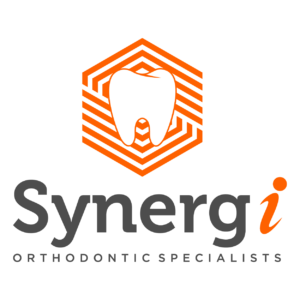My journey in orthodontics began with a strong foundation. I was fortunate to attend a great residency program at Oregon Health & Science University where I was exposed to a wide range of cases, patient ages, and treatment modalities. This diverse experience set the stage for what would become a deep and evolving commitment to comprehensive care.
Over the past decade, I’ve had the privilege of consulting with thousands of patients. As I meticulously reviewed patient records and treated these patients over the years, patterns began to emerge—patterns that revealed much more than just misaligned teeth. Watching patients grow, noting family history, and identifying recurring issues led me to a realization: orthodontics is about so much more than just straightening teeth.
The Role of Technology and Experience
About five years into my career, I began routinely using 3D Radiographs (CBCT-Cone Beam Computed Tomography.) This technology opened up a whole new dimension of understanding for me, allowing me to see aspects of my patients’ oral and facial structures that I couldn’t have imagined before. It became clear that what we do as orthodontists can have a profound impact on a person’s overall health, especially when it comes to breathing and airway health, which we now understand is paramount to overall health and wellness.
A Holistic Approach to Health and Wellness
My personal passion for fitness, health, and wellness has always influenced my professional life. Living in Oregon for seven years, a hub for alternative health and wellness, further shaped my perspective. The local culture’s focus on holistic health rubbed off on me, prompting me to explore how these principles could be applied in my orthodontic practice.
Breathing workshops, initially undertaken for my own meditation and sports performance, turned out to be a game-changer. I began to understand the critical role that breathing plays in growth, development, and overall health. This realization led me to seek knowledge from a variety of practitioners—chiropractors, physical therapists, speech therapists, orofacial myofunctional therapists, occupational therapists, acupuncturists, nutritionists, pediatricians, and pediatric dentists. The wealth of knowledge I gained from these professionals has greatly influenced how I approach patient care.
A New Vision for Orthodontic Treatment
Today, my orthodontic treatment plans are incredibly comprehensive. I don’t just focus on aligning teeth; I evaluate muscular function and balance, esthetics, growth and development, airway health, TMJ function, long-term dental health, and overall well-being. This holistic approach allows me to address issues that go far beyond what traditional orthodontics typically covers.
For example, I’ve noticed a significant increase in patients with Class II malocclusions (small lower jaws), open mouth posture, lip incompetence, narrow palates, narrow airway volumes, autism/hyperactivity and other chronic conditions like allergies and obesity. These issues often correlate with a variety of other problems. These are not just cosmetic concerns—they can have serious implications for a child’s overall health, and ultimately children become adults with more health issues.
The Importance of Early Intervention
Why do we see kids so young in the field of orthodontics these days? Because we now understand, 60% of facial growth is complete by age six, and 90% by ages 11-12. Early intervention is crucial. If a patient comes in for a screening after the age of 12, the options for comprehensive care are reduced, and sometimes ideal outcomes are compromised. Muscle memory, particularly tongue posture, plays a significant role in shaping the growth of the palate and mandible. Poor tongue development due to issues like a tongue tie or thumb-sucking habits can lead to serious developmental concerns, that are hard to unlearn once your body has adapted to these improper muscle patterns.
Orthodontists are uniquely positioned to identify sleep-disordered breathing, airway issues, and disrupted growth patterns. With the timing of our patient interactions and the use of advanced 3D CBCT radiographic technology, we’re often the first to notice these critical issues. In many ways, orthodontists are becoming primary caregivers for pediatric airway assessment.
Understanding Sleep-Disordered Breathing
Sleep-disordered breathing is a significant concern that I encounter regularly. Mouth breathing, for example, can lead to dry mouth, cavities, periodontal disease, bad breath, and even obesity due to poor breathing mechanics. Other symptoms like snoring, grinding, night terrors, and bedwetting are often signs of deeper issues.
These problems can manifest in various ways, such as morning headaches, poor school performance, hyperactivity, behavioral issues, and chronic lethargy. The removal of tonsils and adenoids has become increasingly common as a solution, but prevention and early intervention are always the preferred approach, and sometimes an orthodontic expander can reduce the need for other more complex interventions like surgery of the tonsils/adenoids, surgery of the jaw structures, or teeth removal.
Recommendations for Parents
For parents, there are steps you can take early on to support your child’s healthy growth and development. These include:
- Bring your child into an orthodontist to be screened, no later than age 7, and sooner if you notice mouth breathing, sleep issues (bed wetting, snoring, etc), crossbite, speech issues, tongue thrust, or any other symptoms listed above.
A Call to Action
In my practice, I aim to prevent and guide growth. With early intervention, I am aiming to work myself out of a job for future treatment. I’ve learned that healthy breathing habits are just as important as healthy eating habits—if not more so. The relationship between oxygen and the body is fundamental. Chronic over-breathing, often due to mouth breathing, can lead to a host of health issues, including lethargy, weight gain, respiratory conditions, and heart disease.
By fostering proper breathing habits, we can help prevent the narrowing of airways and the constriction of blood vessels, ultimately supporting overall health. This holistic approach to orthodontics isn’t just about creating beautiful smiles—it’s about ensuring that our patients lead healthier, happier lives.
Recommended Reading For those interested in learning more about these topics, I recommend the following books:
- Sleep Wrecked Kids by Sharon Moore
- Jaws: The Story of a Hidden Epidemic by Sandra Kahn
- Breathe by James Nestor
- The Oxygen Advantage by Patrick Mckweon
- Tongue Tied by Dr. Richard Baxter

